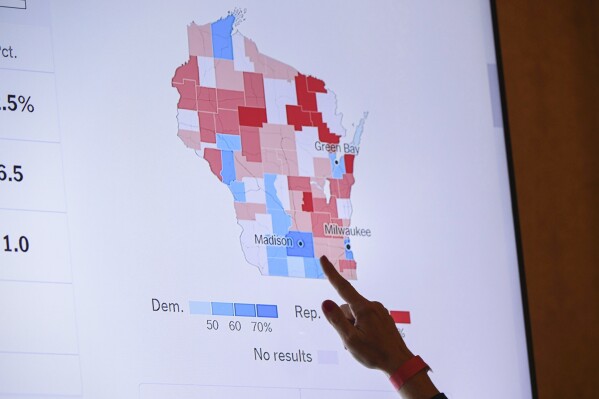Gov. Evers creates task force to study AI’s affect on Wisconsin workforce
MADISON, Wis. (AP) — Wisconsin became the latest state Wednesday to launch a task force to study the affects of artificial intelligence on the workforce, a growing area of concern among state leaders nationwide.
Gov. Tony Evers signed an executive order creating the study group under the state Department of Workforce Development. It is to include state government leaders, representatives from the University of Wisconsin and Wisconsin Technical College Systems, and others from state and local governments, the business community, educational institutions, organized labor, the technology sector and more.
Evers said the group will gather information and create an action plan to identify the current state of AI on Wisconsin’s labor market and key industries, occupations and skill sets, and make predictions on where it’s headed.
Evers, in a statement, said creating the task force will be “critical in understanding, adapting to, and capitalizing on the transformations AI will bring.”
 Conservative group sues Wisconsin secretary of state over open records related to her appointment
Conservative group sues Wisconsin secretary of state over open records related to her appointment
 Want to tune in for the first GOP presidential debate? Here’s how to watch
Want to tune in for the first GOP presidential debate? Here’s how to watch
 The GOP presidential debate puts a spotlight on Wisconsin, one of the few remaining swing states
The GOP presidential debate puts a spotlight on Wisconsin, one of the few remaining swing states
The goal is to have an action plan done in time for the governor to consider when introducing the next state budget in early 2025, his spokesperson Britt Cudaback said.
Wisconsin’s effort follows many other states that have made similar moves, often first focusing on their own governments before imposing restrictions on the private sector.
Several states, including neighboring Minnesota, have been working on model AI legislation that focuses on issues like product liability and requiring impact assessments of AI systems.
Other states that have created study groups similar to Wisconsin include Texas, North Dakota and West Virginia.
AI can be shorthand for many different technologies, ranging from algorithms recommending what to watch next on Netflix to generative AI systems such as ChatGPT that can aid in writing or create new images and other media. The surge of commercial investment in generative AI tools has generated public fascination and concerns about their ability to trick people and spread disinformation, among other dangers.
Disclaimer: The copyright of this article belongs to the original author. Reposting this article is solely for the purpose of information dissemination and does not constitute any investment advice. If there is any infringement, please contact us immediately. We will make corrections or deletions as necessary. Thank you.




